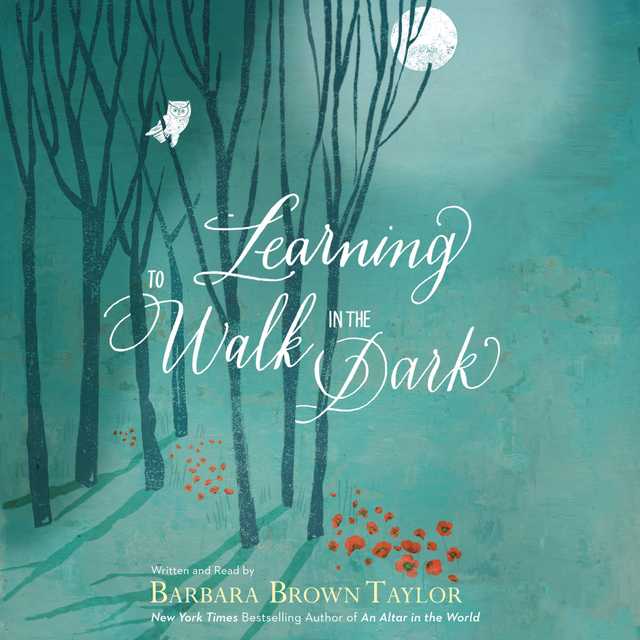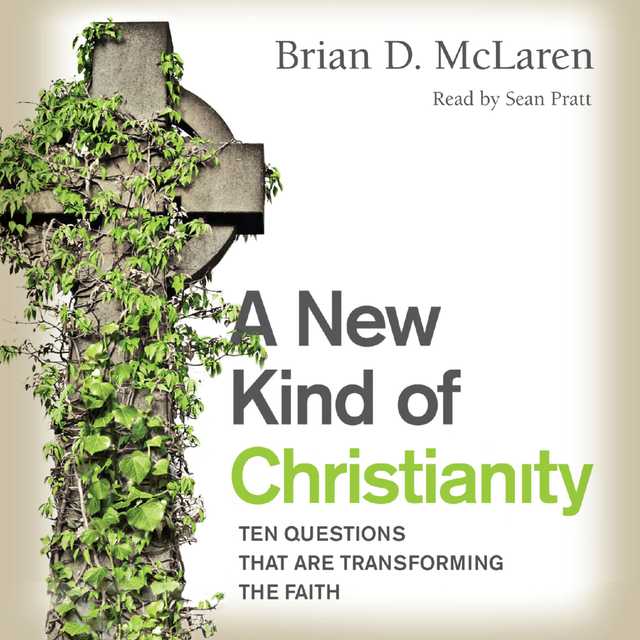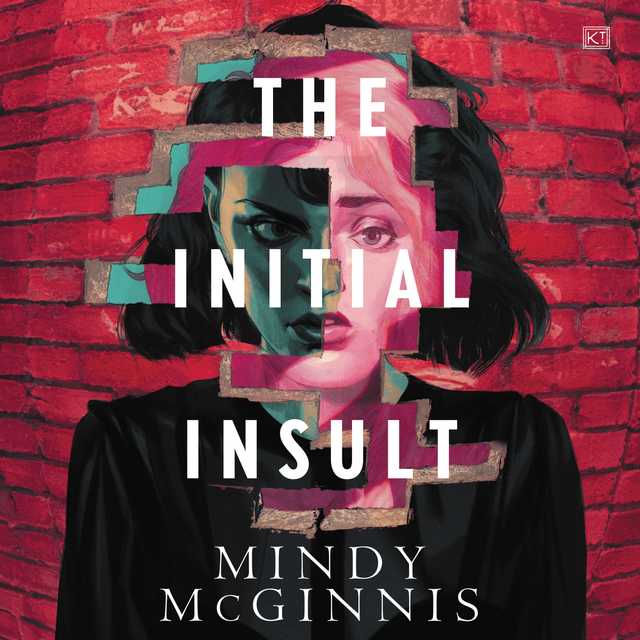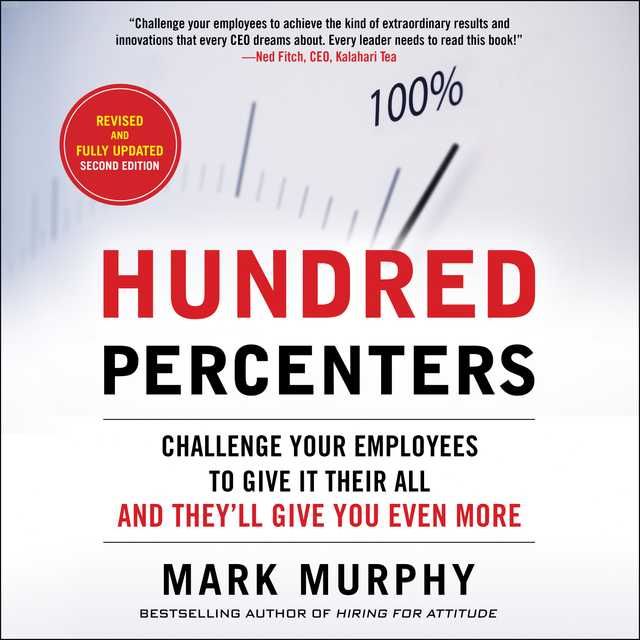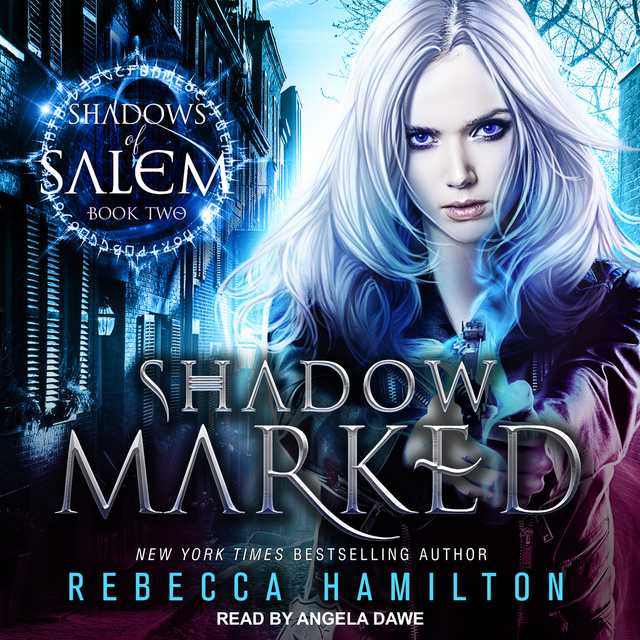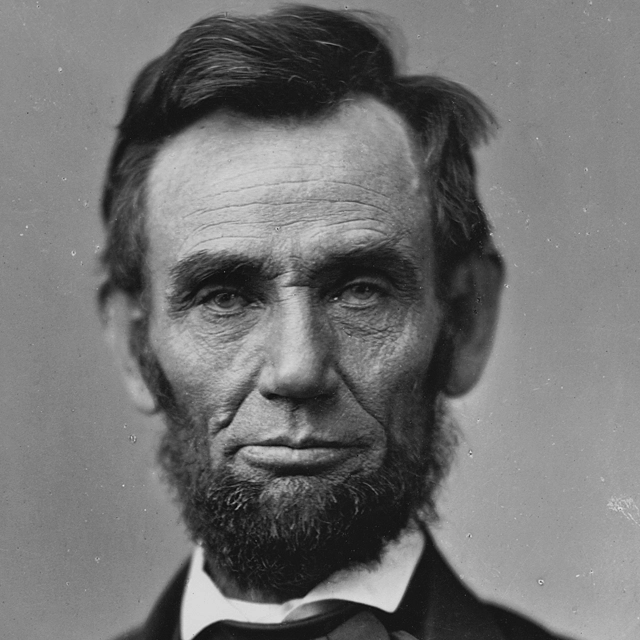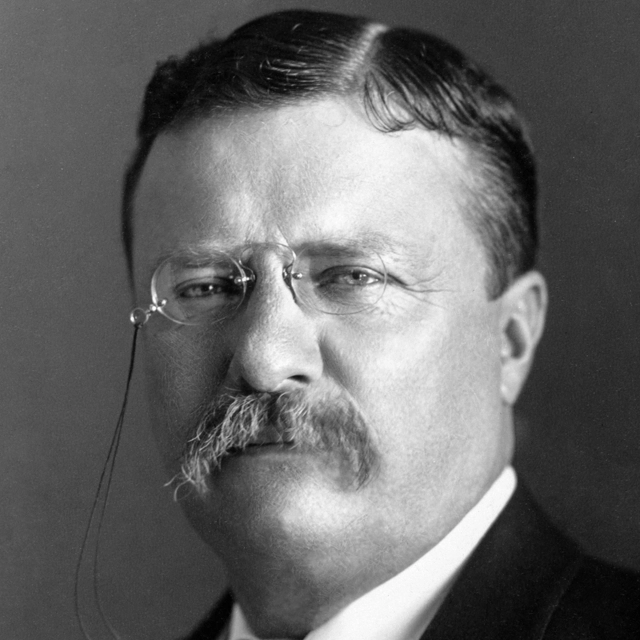Learning to Walk in the Dark Audiobook Summary
New York Times Bestseller
From the New York Times bestselling author of An Altar in the World, Barbara Brown Taylor’s Learning to Walk in the Dark provides a way to find spirituality in those times when we don’t have all the answers.
Taylor has become increasingly uncomfortable with our tendency to associate all that is good with lightness and all that is evil and dangerous with darkness. Doesn’t God work in the nighttime as well? In Learning to Walk in the Dark, Taylor asks us to put aside our fears and anxieties and to explore all that God has to teach us “in the dark.” She argues that we need to move away from our “solar spirituality” and ease our way into appreciating “lunar spirituality” (since, like the moon, our experience of the light waxes and wanes). Through darkness we find courage, we understand the world in new ways, and we feel God’s presence around us, guiding us through things seen and unseen. Often, it is while we are in the dark that we grow the most.
With her characteristic charm and literary wisdom, Taylor is our guide through a spirituality of the nighttime, teaching us how to find our footing in times of uncertainty and giving us strength and hope to face all of life’s challenging moments.
Other Top Audiobooks
Learning to Walk in the Dark Audiobook Narrator
Barbara Brown Taylor is the narrator of Learning to Walk in the Dark audiobook that was written by Barbara Brown Taylor
Barbara Brown Taylor is the author of thirteen books, including the New York Times bestseller An Altar in the World and Leaving Church, which received an Author of the Year award from the Georgia Writers Association. Taylor is the Butman Professor of Religion at Piedmont College, where she has taught since 1998. She lives on a working farm in rural northeast Georgia with her husband, Ed.
About the Author(s) of Learning to Walk in the Dark
Barbara Brown Taylor is the author of Learning to Walk in the Dark
More From the Same
- Author : Barbara Brown Taylor
- An Altar in the World
- Holy Envy
- Always a Guest
- Home by Another Way
- Publisher : HarperAudio
- Abraham
- American Gods [TV Tie-In]
- Dead Ringer
- House of Sand and Fog
- Prey
Learning to Walk in the Dark Full Details
| Narrator | Barbara Brown Taylor |
| Length | 5 hours 30 minutes |
| Author | Barbara Brown Taylor |
| Publisher | HarperAudio |
| Release date | April 08, 2014 |
| ISBN | 9780062283931 |
Additional info
The publisher of the Learning to Walk in the Dark is HarperAudio. The imprint is HarperAudio. It is supplied by HarperAudio. The ISBN-13 is 9780062283931.
Global Availability
This book is only available in the United States.
Goodreads Reviews
Nicole
July 02, 2014
Great book exploring the "darker" side of spirituality -- the usefulness of "the dark night of the soul" and how integral it is to Christian theology and Biblical understanding as well as our own personal development. Easy read for anyone who is tired of superficial Christian thought that tells people that as long as they "pray" (the right way) all will be well. Sometimes we just have to sit in the dark for a while and see how God comes to us.
Robin
April 15, 2014
Would read a book of blank pages if Barbara Brown Taylor's name appeared on the cover :)Seriously, this is another great, insightful, soul-mining piece by BBT. Having just experienced my own time in the dark...wrought with questions, doubts, hopelessness...this book gave merit and worth to that time. As a dear friend shared (thank you Kate Watkins...for turning me on to BBT AND for sharing that nugget from Isaiah), there are things to be learned from treasures found in the darkness. Great book!
debbicat *made of stardust*
May 22, 2020
I just loved this and really connected to it. I ended up adding the audio from audible so I could listen while I walked in the evening. She reads it herself and I am a sucker for an author narrating her book. She has a beautiful reading voice. I have read her book, Leaving Church: A Memoir of Faith about 3 times now (I have that one on audio too). I imagine I will want a re-read of this one too. I highly recommend it!
Michael
September 03, 2018
Learning to Walk in the Dark is a book that took me to a lot of places that I didn't want to go, did so purposefully, explained what it was doing all the way through, and then made me glad that I took the journey. It was a difficult book to read, not because the prose is opaque (it is very clear), but because the ideas were hard. Because, like most people, I am afraid of the dark.Taylor moves skillfully between darkness as an actual phenomenon, darkness as an emotional state such as depression, and darkness as an inability to have faith or perceive God. These are all different things, but in some key ways, they are the same kind of thing. They are all frightening because they contain unknowns. And they are all things that we would be healthier--spiritually, emotionally, and spiritually--if we learned how to embrace instead of trying to avoid.The type for all of the other forms of darkness that Taylor describes is, well, darkness--the thing that happens at night when the sun goes down. Humans evolved in a world of both darkness and light, and we are adapted to--and actually need--both. When we flood the darkness with artificial light, Taylor suggests, we mess up a lot of stuff: our sleep patterns change, we get cut off from the stars that were once a main tool of navigation, we miss out on a lot of the wonder that comes with living in the universe. And we impose our preference for light on many other creatures who experience light and dark differently than we do. One of the most powerful stories that Taylor tells involves her and her husband finding a large sea turtle who came ashore at night to lay her eggs and then tried to use the light of the horizon to navigate back to the sea. But because the light of the cityscape was brighter than the light of the horizon, the turtle went the wrong way and became stranded on the sand. This is a good example of the price that the natural world pays for the fact that people are afraid of the dark.From the understanding of a naturalist, Taylor pivots to her own areas of expertise, such as the mind and the soul. Our culture has assigned “dark” to a subset of natural emotions and “light” to another subset and encouraged us to spend much of our lives trying to produce light emotions artificially and suppress dark ones by any means necessary. As she writes,It is the inability to bear dark emotions that causes many of our most significant problems, in other words, not the emotions themselves. When we cannot tolerate the dark, we try all kinds of artificial lights, including but not limited to drugs, alcohol, shopping, shallow sex, and hours in front of the television set or computer. There are no dark emotions . . . just unskillful ways of coping with emotions we cannot bear. The emotions themselves are conduits of pure energy that want something from us: to wake us up, to tell us something we need to know, to break the ice around our hearts, to move us to act. (78)The answer to dealing with dark emotions is roughly the same as dealing with dark paths, and is the title of the book: learning to walk in the dark, or learning to be comfortable experiencing the entire range of human emotions and not just the ones sanctified by religious and pharmaceutical communities.The greatest impact of Learning to Walk in the Dark is in its discussion of spirituality, or the search for God. Barbara Brown Taylor is a preacher, but also a doubter, a searcher, and a profoundly intelligent human undergoing a permanent state of faith transition. She has experienced God, but not consistently, and not always in the same place. She left the ministry and her spiritual home (the Episcopalian Church), but she remains a person of faith, and also a person of doubt.And that is OK. Uncertainty is OK. Doubt is OK. These things are not antithetical to faith; they are part of an opposition that is as important to us as the opposition of day and night. We need both. We learn from both. And we illogically fear one and try to annihilate it with the other. We need to cut that out, Taylor tells us, and I will quote at length from an important passage that tells us why:Once you have emerged from whatever safe religious place you were in – recognising that your view of the world is one worldview among many, discovering the historical Jesus, revolutionising your understanding of scripture and up-dating your theology; nce you have changed the way you do church, or at least changed the music at your church and hired a pastor who twitters, or you can no longer find any church within a fifty-mile radius in which you can let your guard down long enough to pray; Once the Dalai Lama starts making more sense to you as the pope or your favourite preacher, and your rare but renovating encounters with the Divine reduce all your best words to dust, well, what’s left to hold onto?I do not believe I am describing a loss of faith in God here. Instead, I believe I am describing a loss of faith in the system that promised to help me grasp God not only by setting my feet on the right track but also by giving me the right language, concepts, and tools to get a hook in the Real Thing when I found it. To lose all that is not the same thing as spending eleven months in a dungeon (speaking of John of the Cross). It may not even qualify as a true dark night of the soul, but it is without doubt the cloudiest evening of the soul I have known so far. After so many years of trying to cobble together a way of thinking about God that makes sense so that I can safely settle down with it, it all turns to nada. There is no permanently safe place to settle. I will always be at sea, steering by stars. Yet as dark as this sounds, it provides great relief, because it now sounds truer than anything that came before. (139-140)Learning to Walk in the Dark is a remarkable book full of revelations, surprises, and genuine grace. The journey that it advocates is a scary one, on several different levels at once. But the book itself is an excellent guide to what the author calls “endarkenment.” May we all experience its endarkening rays.
Gea
July 18, 2014
I'd really like to give this 3.5 stars if I could. There were so many wonderful insights here and I'm very glad I read this, yet I was hoping for more. More darkness. More depth. More anguish. I listened to this on Audiobook and Barbara Brown Taylor narrates it herself quite nicely. She definitely opened up the spiritual dimensions of darkness for me, but she could have gone farther, deeper. This felt a little shallow in places. She visits a cave, spends a long night alone in a cabin, but I was looking for more than that. There is some wonderful stuff here about blindness and our modern aversion to darkness that was quite fascinating. It's clear Taylor has spent her entire adult life studying the spiritual dimension and asking deep existential questions. This is definitely worth a read, I just thought she could have gone deeper into the darkness. I wanted more of it.
Rachel | All the RAD Reads
December 21, 2016
I could not have loved this book more. After talking to a close friend (who happens to be a pastor at my church, an author, and one of the wisest women I know) about feeling like I was in a dark season, this surprise showed up on my doorstep. Such a gift. The words in this book just resonated SO deeply and in the most beautiful, poetic, personal, and meaningful way. I cannot praise this one enough. I've never read a book that just made it all make so much sense and also showed me how beautiful the darkness can be. I'll forever be singing the praises of this book. If you feel like you're in a season of darkness or depression or anxiety of any kind, please pick this one up. I'll even mail you a copy! It's that good and I want you to read it that badly.
Stephanie
April 01, 2020
This is the March 2020 selection for South Austin Spiritual Book Group, which is meeting online for the first time in its 15 year history this month because of Covid-19. Folks who attend our Group are remarking ahead of our Zoom call about how timely the book seems, which is exactly the way I feel about it.Barbara Brown Taylor is easy to read. Her writing style is contemporary and friendly--she's comfortable to get next to on paper.
Steve
November 21, 2019
Learning to Walk in the Dark is a book I didn’t want to approach too quickly. I heard about it five years ago and wanted to read it right away. Instead I waited. Barbara Brown Taylor is a fairly well known cleric and scholar. A former priest in the Episcopal Church and a professor of religion, she is well versed in spiritual practice and gifted in spiritual writing. One need not be religious to appreciate this honest little book. Brown Taylor asks why we are so discouraged from exploring the dark when it is such a large part of life.I read and watch horror, which makes me liable to accusations of morbidity. Some of us, however, look at these as coping mechanisms for a life that hands you things you’d rather not face at a fairly rapid pace. It makes sense to get acquainted. The nine chapters here are brief and could even be considered meditations. Reflecting on what dark is and how it gets applied to perfectly normal emotions, Brown Taylor seeks out opportunities to explore the dark. Staying in an isolated cabin, sitting in a cave, and visiting a museum that emulates the experience of being blind—each leads to insights and reflections.This is a book that is best savored rather than rushed through. For me the introduction was like taking a stroll through my own psyche. I like light just fine. I get oppressed by repeated cloudy days. At the same time, I find darkness compelling. One can have it both ways. Visual creatures need contrast to see anything clearly. This book is an exercise in learning to see, as well as walk, in the dark. For those interested, I commented further on it here: Sects and Violence in the Ancient World.
Hannah
October 02, 2019
a book i’m sure i’ll come back to, over and over again. i dog eared so many pages with quotes and ideas i want to come back to + so loved BBT’s wisdom in this one. two things i wish had been different about my reading experience: 1. i wish it was my own book so i could highlight and come back to things + ideas, not just in my journal 2. i wish i had savoured it more - i am racking up the late fines on this bad boy right now & i felt myself rushing through the last half. so, those are the two things i’ll change next time + also if you’re wanting to read this book, i highly recommend reading only a chapter a day or so.
Tricia
November 13, 2019
The premise of this book is that we have injured ourselves though “pure solar Christianity” - the teaching or culture that a strong faith will rescue us from all “darkness” - not just evil, but sadness, loss, pain, and struggle - and one of our spiritual goals is to be delivered from those things. This book asks the question - what if, instead, there are things we can only learn in the dark? And what if by avoiding the dark so belligerently we are hampering our growth and ultimately our peace. What if we are so afraid of facing our inner darkness that we never confront it, learn from it, and transform it?Taylor beautifully offers this invitation and shows what I think we know deep down - that we can’t avoid darkness. Then she offers hope that it is ok to face it, and we will find beauty and peace there unavailable anywhere else.
marilyn
June 24, 2021
This book ordered so many of my thoughts about faith and loss, grief and serenity that often feel jumbled and incoherent. Taylor is a master of metaphor and her words are effortless magic. I am certain I will return to this book for the rest of my life.
Lisa
March 31, 2021
I rate this book as a preacher, looking to Taylor for guidance with an Easter sermon. As always, she is a quiet guide, pointing out some of what I miss as I move around in the world, often too quickly.
Marian
September 17, 2017
Barbara Brown Taylor’s Learning to Walk in the Dark is the best book about exploring darkness I have ever read. In fact, it is the only book on the topic I have encountered. Early on, the author warns that her book is more of a journal than a manual, “focusing on spiritual practice rooted in ordinary, physical, human life on earth, like going for a walk, paying attention to a tree, hanging a load of laundry on the line, and treating other people like peepholes into God.” How can we develop the courage to walk in the dark if we are never asked to practice? she asks. The chapters that follow probe the mystery.In nine chapters that track the phases of the moon, Taylor investigates the idea of darkness through four prisms: physical, psychological, spiritual, and theological. Rich with research, the book also enlightens its readers on the subjects of cosmology, biology, and history. As scholar, she introduces her audience to writers who have explored the topic: Miriam Greenspan, Jacques Lusseyran, James Fowler, and Pema Chodron among others.Taylor, New York Times best-selling author of An Altar in the World, is most fascinating when she reconstructs her own history with darkness. Readers can vicariously experience dining in an opaque restaurant where guests eat in the dark, participate in a Dialogue in the Dark where the blind really do lead the blind, go spelunking in an unlit cave, and gaze at the night sky alongside the author, who assures insomniacs that not until the invention of incandescent lights did people think it necessary to sleep for eight consecutive hours. (NIMH study)The author’s bio includes fifteen years in parish ministry and decades as professor of religion at Piedmont College. Thus, readers can expect her to address a spirituality that works in the nighttime, one that teaches us humans how to develop the courage to walk in the dark. And to re-read scripture to see all the times God shows up at night, a metaphor that can stand in for what we fear.
Elizabeth
March 27, 2019
I loved listening to this, both for the content and for the peaceful sound of the narrator/author's voice. I've always been afraid of my own dark emotions, so this was a thought-provoking and gentle continuation of the work I've been doing in my own heart and mind to reimagine the "dark" emotions and lessen my fear. I love thinking about the passages of Scripture she highlights that talk about the dark and look forward to reading Scripture through that lens, too. Taylor draws on so many interesting thinkers and experiences for this book, from journeying with John of the Cross into the dark night of the soul to experiencing the total darkness of a cave. Taylor reflects on the effects of electric lights in the last century and how it's not as uniformly good as we might think. So many new thoughts in reading this book. I would like my own copy to mark up and ponder further. I know I'll be coming back to listening to this book, even bits and pieces at a time, because I don't want to forget too quickly its wisdom and gently probing to think of darkness and all it touches in a new and deeper and more open way.
Emily
August 01, 2021
Had my doubts as I do about all Christian/spiritual borderline self-help books, but I actually really enjoyed it. Her writing is thought provoking without being preachy or condescending and I liked the references to other writers and spiritual teachers that she made. A good read if you are drawn to recognizing the importance of any and all emotions we experience as people regardless of if they are good or bad
Sarah
February 25, 2022
I'm a huge fan of Barbara Brown Taylor and this book of hers is my favorite. In "Learning to Walk in the Dark," she puts new language around our current understanding of darkness, showing that God is found even there, especially there. Whether you are Christian or not, no one is spared "dark" seasons of pain, suffering, and hardship. We need more books like this one that speak into that reality and point us always back to God.
Most Popular Audiobooks
Frequently asked questions
Listening to audiobooks not only easy, it is also very convenient. You can listen to audiobooks on almost every device. From your laptop to your smart phone or even a smart speaker like Apple HomePod or even Alexa. Here’s how you can get started listening to audiobooks.
- 1. Download your favorite audiobook app such as Speechify.
- 2. Sign up for an account.
- 3. Browse the library for the best audiobooks and select the first one for free
- 4. Download the audiobook file to your device
- 5. Open the Speechify audiobook app and select the audiobook you want to listen to.
- 6. Adjust the playback speed and other settings to your preference.
- 7. Press play and enjoy!
While you can listen to the bestsellers on almost any device, and preferences may vary, generally smart phones are offer the most convenience factor. You could be working out, grocery shopping, or even watching your dog in the dog park on a Saturday morning.
However, most audiobook apps work across multiple devices so you can pick up that riveting new Stephen King book you started at the dog park, back on your laptop when you get back home.
Speechify is one of the best apps for audiobooks. The pricing structure is the most competitive in the market and the app is easy to use. It features the best sellers and award winning authors. Listen to your favorite books or discover new ones and listen to real voice actors read to you. Getting started is easy, the first book is free.
Research showcasing the brain health benefits of reading on a regular basis is wide-ranging and undeniable. However, research comparing the benefits of reading vs listening is much more sparse. According to professor of psychology and author Dr. Kristen Willeumier, though, there is good reason to believe that the reading experience provided by audiobooks offers many of the same brain benefits as reading a physical book.
Audiobooks are recordings of books that are read aloud by a professional voice actor. The recordings are typically available for purchase and download in digital formats such as MP3, WMA, or AAC. They can also be streamed from online services like Speechify, Audible, AppleBooks, or Spotify.
You simply download the app onto your smart phone, create your account, and in Speechify, you can choose your first book, from our vast library of best-sellers and classics, to read for free.
Audiobooks, like real books can add up over time. Here’s where you can listen to audiobooks for free. Speechify let’s you read your first best seller for free. Apart from that, we have a vast selection of free audiobooks that you can enjoy. Get the same rich experience no matter if the book was free or not.
It depends. Yes, there are free audiobooks and paid audiobooks. Speechify offers a blend of both!
It varies. The easiest way depends on a few things. The app and service you use, which device, and platform. Speechify is the easiest way to listen to audiobooks. Downloading the app is quick. It is not a large app and does not eat up space on your iPhone or Android device.
Listening to audiobooks on your smart phone, with Speechify, is the easiest way to listen to audiobooks.

